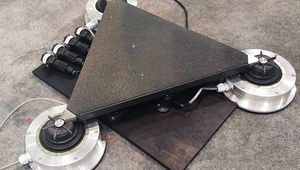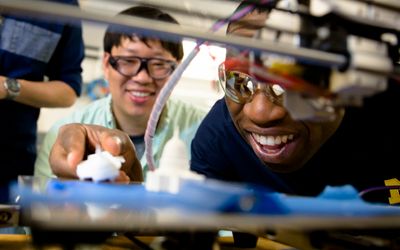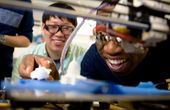IM73A135 XENSIV™ MEMS Microphone
An IP57 dust and water-resistant analog differential XENSIV™ MEMS microphone designed for applications requiring high SNR and low self-noise.
Technical Specifications
| Product | Audio Microphone |
| Interface | Analog Differential |
| Sensitivity | -38 |
| SNR | 73 |
| AOP | 135 |
| Supply Voltage | 1.52 - 3.00 |
| Current Consumption | 170 |
Overview
IM73A135 is an IP57 dust and water-resistant analog differential XENSIV™ MEMS microphone. It gives a high signal-to-noise ratio (SNR) of 73 dB and an acoustic overload point of 135 dBSPL enabling far field and low-volume audio pick-up. The microphone offers high ingress protection (IP57) at the microphone level due to Infineon's Sealed Dual Membrane MEMS technology. The IM73A135 enables designers to take advantage of MEMS technology's inherent features while achieving a high audio performance that was previously only possible with ECMs. The microphone is built for applications requiring high reliability and long battery life. Potential applications include ANC headphones, conference systems, smart speakers, surveillance, medical devices, and cameras.
XENSIV™ MEMS microphone
XENSIV™ MEMS microphones are known for their low self-noise (high SNR), low distortions (THD) even at high sound pressure levels (SPL), flat frequency response with a low LFRO, sensitivity matching, and ultra-low group delay. Microphones built with sealed dual membrane MEMS technology can be used to create IP68 devices, requiring only minimal mesh protection.
Infineon XENSIV™ MEMS microphones are used for consumer electronics with high audio-capturing capabilities. There is also used for industrial applications like security and predictive maintenance due to its adjustable power modes and compact package size.
IM73A135 microphone comes up with similar features. It is an IP57 robust microphone in a small form factor. Its low power mode makes it fit for use in battery-critical applications. The microphone gives a low self-noise and low corner frequency, due to which far field and low volume audio pick-up becomes easy. It also provides clear audio signals for the highest sound pressure levels.
IM73A135 Microphone Features
IM73A135 is a microphone with low self-noise and high SNR (73 dB), enabling far-field and low-volume audio pick-up. Applications utilizing multiple microphone arrays work better due to the precise manufacturing tolerance and flat frequency response (20Hz low-frequency roll-off). The microphone gives differential output, and it follows an omnidirectional pickup pattern.
The analog microphone ASIC contains a low-noise preamplifier and a high-performance differential output amplifier. Users can choose different power modes to meet particular criteria for current consumption. The modern Infineon calibration algorithm achieves small sensitivity tolerances for each IM73A135V01 microphone.
IM73A135 has a high dynamic range and Acoustic Overload Point (AOP) of 135dBSPL. It offers a tight part-to-part phase and sensitivity match (± 1 dB). In microphones, a smoother frequency response is more desirable than a highly variable one, with flat being the optimum goal. IM69D128S gives a flat frequency response with an LFRO (low-frequency roll-off) of 20 Hz.
Applications
IM73A135 is perfect for applications including Active Noise Cancellation (ANC) ) headphones and wireless earbuds, high-quality audio-capturing conference systems, cameras and camcorders, devices with Voice User Interface (VUI), and hearing enhancement devices. This includes smart speakers, home automation, Internet of Things (IoT) devices, and industrial or home monitoring with audio pattern detection are other possible uses.











